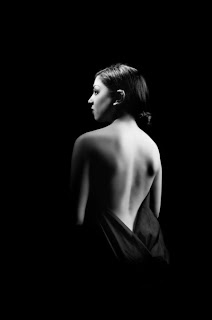Essentially, line makes up the shapes we see. Line is the way we define shapes and how our minds recognize objects. Line depicts the edges of shapes.
This is an example of how line makes shapes. If you break this piece down then you basically get a bunch of lines, but if you arrange them in certain ways they take on new forms like the elephant and mouse. The lines define where an object starts and stops, and the interaction with one another to create forms.
130 Samantha Coates
Wednesday, January 25, 2012
2 - Line Direction
Line direction is line that moves, creates motion or how a force acts. Horizontal lines imply lack of motion while diagonal lines mean movement and action.
In this work of art, the lines are horizontal and vertical. This makes the piece feel peaceful and sleep like. The lines have a sense of unity to them and are all about the same thickness so they calm rather than excite the viewer. The direction of the lines make the work feel routine and predictable rather than chaotic.
In this work of art, the lines are horizontal and vertical. This makes the piece feel peaceful and sleep like. The lines have a sense of unity to them and are all about the same thickness so they calm rather than excite the viewer. The direction of the lines make the work feel routine and predictable rather than chaotic.
3 - Line as Emotion
Line can display emotion in numerous ways. The thickness of a line can make something heavy or soft. The color of a line can affect moods. The direction of lines can be boring or crazy. A straight line could be sharp and a curved line could be calm. A line could be just a mark and make the piece feel disconnected or it could be continuous.
In this the lines are thick which creates a frantic feel but the lines are a somewhat transparent in places which makes it feel delicate and soft. The red lines that at diagonal make the work feel exciting and energetic.
In this the lines are thick which creates a frantic feel but the lines are a somewhat transparent in places which makes it feel delicate and soft. The red lines that at diagonal make the work feel exciting and energetic.
4 - Contour Line
A contour line is a line that is like an outline. It is a line that defines an edge of a form.
Contour line drawing require absolute accuracy when drawing. All lines show a beginning and an end.
This is what gives the line shape and turns it into a realistic representation of something else. Nothing other than lines create the detail, no shading to create depth, just lines.
Contour line drawing require absolute accuracy when drawing. All lines show a beginning and an end.
This is what gives the line shape and turns it into a realistic representation of something else. Nothing other than lines create the detail, no shading to create depth, just lines.
5 - Gesture Line
Gesture lines are lines that create the basic shape of an object or something but it is not realistic and rather creates the energy or action of the objects. Gesture lines are less worried about shapes and focus on emotion and action.
In this sketch you can clearly tell that it is a person that is being represented. However, there are not many detail but instead scribble like lines that together make the image of a person. Gesture lines often represent movement and here the lines show the movement of walking and reaching.
In this sketch you can clearly tell that it is a person that is being represented. However, there are not many detail but instead scribble like lines that together make the image of a person. Gesture lines often represent movement and here the lines show the movement of walking and reaching.
6 - Line as value
One line can show the basic shape of objects but it looks flat. Line can be used to create value by adding depth to the subject. Lines close together can create different shades of gray and the farther apart lines are more shades can be made. This can create lights and dark's aka value.
Here, line is used to create value by its shading. The artist has used lights and darks to show depth and make the subject seem realistic and 3-dimentional. In this piece, to create the value the technique of cross-hatching is being used to give fullness to the figure.
Here, line is used to create value by its shading. The artist has used lights and darks to show depth and make the subject seem realistic and 3-dimentional. In this piece, to create the value the technique of cross-hatching is being used to give fullness to the figure.
7- Lost and Found Contour
This is where only part of an object is revealed by a sharp contour and the rest is represented by light.
This can also be described as now you see it- now you don't.
In this picture, only a few lines are given to create shape. The rest fade into darkness. Our eyes automatically fill in and follow the line even if it is not there, giving the illusion of a line, but then the line is picked up again by the changing of light. Therefore, the line is lost and found.
This can also be described as now you see it- now you don't.
In this picture, only a few lines are given to create shape. The rest fade into darkness. Our eyes automatically fill in and follow the line even if it is not there, giving the illusion of a line, but then the line is picked up again by the changing of light. Therefore, the line is lost and found.
Subscribe to:
Posts (Atom)






